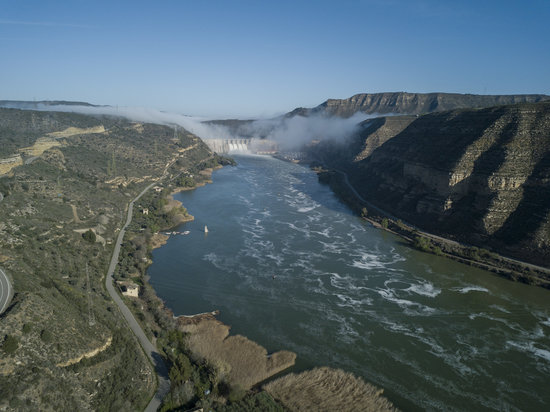Can the Ebre Delta be saved from erosion?
Plan comes to light for solving sediment problems after Storm Gloria reopens debate on threat to Catalonia's unique wetland area

During Storm Gloria that recently battered Catalonia with days of heavy winds and torrential rain, one of the areas most severely affected was the Ebre Delta in the south, a natural wetland zone where the Ebre River meets the Mediterranean Sea.
With beaches washed away and dykes submerged, the storm merely exacerbated the Delta's erosion problems, with one local representative summing it up as "what we might see happen in a space of a dozen years, has happened in a single night."
Yet, last week's storm has served to reopen the long-standing debate on how to preserve the Delta and its coastline, and it has now come to light that the body that manages and regulates the area's waters, the CHE, has a plan to combat the erosion.
For over a year, it seems, the CHE has been in possession of a study on how to move sediment that gets trapped by the reservoirs built in the past few decades into the final stretch of the river and so counter the ongoing subsidence.
Viable formulas but high costs
The study from December 2018 analyzes and compares different formulas for overcoming a series of technical difficulties to move the sediment into the river, although the costs in doing so would be very high.
After looking at similar situations around the world, the experts that carried out the study conclude that emptying the Riba-roja and Flix reservoirs, removing the sediment, and then refilling them is an option that is "technically viable."
In the case of the Mequinensa reservoir, which is larger than the other two, the experts advise dredging the reservoir and removing the sediment mechanically, although they admit the costs would be "extremely high."
Another technique explored in the study is the possibility of distributing the sediment removed from the reservoirs through the area's system of irrigation canals, although they say this would have to be done progressively over various stages.
Study's existence unknown in Catalonia
Although the study was delivered to the CHE over a year ago, its existence was unknown in Catalonia, something that member of the Campanya pels Sediments platform and author of an upcoming book on the situation, Josep Juan, describes as "a little worrying."
While welcoming the study's existence, Juan says it is possible that the CHE "is not interested in us having this knowledge," due to "a lack of political will" and he calls on the Catalan and Spanish authorities to show that "they take the issue seriously."
Carles Ibàñez, researcher at the Institute of Agrifood Research and Technology (IRTA), warns that the sea carries away substantial amounts of material from the coast that cannot be replaced by what the flow of the Ebre River brings with it.
"If we do not bring in more sediment it will end up lost and it's impossible to bring in sand from beaches, because it would need more sand than there is in Catalonia, hundreds of thousands of tonnes," says Ibáñez.
"Doing nothing" not an option
Whether the proposals in the CHE study are eventually adopted, despite the potential costs, or whether other solutions are sought to try to solve the Delta's erosion problems, one option is clearly off the table: doing nothing.
"The most catastrophic scenario is that we don't do anything. If we do nothing, we know exactly what will happen: the Delta will disappear and the reservoirs will clog up," warns Juan.